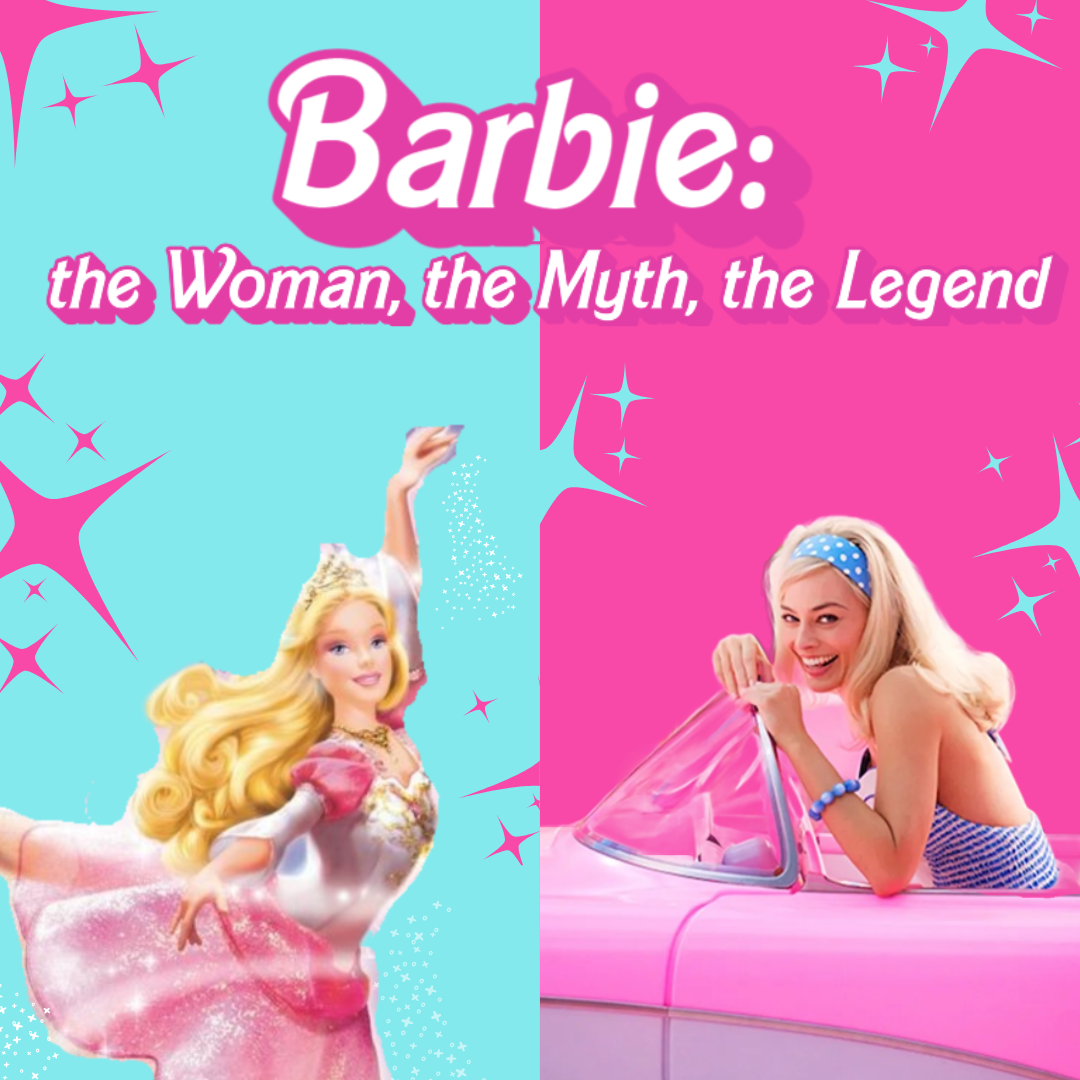This review of Barbie comes fashionably late because I live in Lahore. As we all know, the Punjab Film Censor Board took it upon themselves to save Pakistani society from the clutches of Western propaganda by banning Barbie. Their excuse was “objectionable”, and “LGBTQ+” content. Having watched both Oppenheimer and Barbie, it’s safe to say that from an NSFW point of view, Oppenheimer far outranked Barbie (I’m looking at you, Cillian Murphy and Florence Pugh). As far as LGBTQ+ promotion goes, I’m not sure I saw the same movie because it felt as if Barbie took great care not to offend conservatives, keeping all queer-coded characters and dialogues open for interpretation. Then again, as a Pakistani, I wouldn’t be surprised if the censor board were just alarmed by the sheer amount of pink (and women!) in Barbie and called it a day for that reason alone.
Going back to the Lahori experience of Barbie, we inevitably turn to Chalo Cinema: the dingiest cinema I’ve ever had the misfortune of being in, found on the third-floor obscure corner of some random mall in Fortress. Chalo Cinema happens to be the only cinema in Lahore which follows the Islamabad film board and thus could show Barbie when other cinemas couldn’t. I watched Barbie in the dark days before the ban was lifted and that’s why me and the girlies found ourselves dragged forty-five minutes away from home, waiting for tickets in a long line. For a while, we thought we’d have to go back home without watching Barbie.
“I’m gonna kill myself if I don’t get to watch this movie,” claimed the woman next in line, lavishly dressed in pink.
“Same,” I agreed, similarly dressed like a glass of peach iced tea. After around 30 minutes of KhwaariTM, both of us found ourselves watching the movie against all odds.
Barbie(2023) begins with a weirdly subversive scene: young girls play with baby dolls, acting as mothers. The Barbie doll began as a way for young girls to act as something other than mothers, or so the omniscient, omnipresent narrator claims. Barbie is born: Margot Robbie rises, in the iconic black-and-white dress, larger than life. The movie establishes itself as self-aware of its directorial choices right from the get-go, explaining its alternate world as it goes.
The crux of Barbie lies in the differences between Barbie Land and the Real World; the movie is smart, witty and funny as it tries to unpack a lot of the baggage associated with the doll rather than ignoring the elephant in the room. The trailers for the movie also felt purposefully deceptive, as they gave away little to nothing of the actual plot, and with good reason, as I’m sure a lot of people wouldn’t have come to see the movie if they knew it was exposing the current patriarchal status quo through its alternate version of reality where Barbie rocks and Ken is just… there.
Stereotypical Barbie’s (Margot Robbie) adventures in the real world lead her to Gloria, the mother of the girl who is drawing designs for irrepressible-thoughts-of-death Barbie, causing stereotypical Barbie to malfunction in Barbie Land. While Stereotypical Barbie’s life in Barbie Land is beautifully curated, aesthetic and the real-life representation of all our dreamiest Dream House fantasies, her experiences in the real world are hauntingly authentic. Barbie gets most of its real-world politics right to a tee: Stereotypical Barbie faces violent scrutinizing as soon as she steps into the Real World, Gloria is bored at her pedantic, sanitized, colourless workplace of Mattel, and Gloria’s teen daughter, Sasha, is ostracized from her mother as she navigates high-school and puberty.
Gloria’s speech on being a woman in the Real World, although cliched, does manage to strike home. Ironically, an authentic-sounding speech about the realities of womanhood is weaponized to bring the Barbies back to their senses—Barbie astutely comments on the malleability of stories to manufacture consent. The most frustrating aspect of the movie is the almost ‘goofy’, childlike representation of Mattel’s board of directors. Will Ferrel shines in his harmless character as CEO. It’s certainly no surprise to us that the Barbie movie, marketed and produced by the multi-billion dollar company Mattel, portrays its leadership in a favourable light.
When Barbie walks out into a white limbo with Ruth Handler, the founder, it seems like a parody of that Harry Potter scene, especially considering how Stereotypical Typical Barbie agonizes over who, and what she is. Ruth tells her, “I can’t control you, anymore than I could control my own daughter”.
Barbie came about as a doll for Ruth’s daughter to entertain herself with. A beautiful, perfect, pink doll—Ruth wanted her daughter to have the best. The same complex mother-daughter relationship is echoed in Sasha and Gloria: Sasha outgrows her mother’s dolls when she enters high school and rejects all her mother’s advances at connection. In Sasha’s eyes, her mother is beautiful, kind, and good (too accepting, of unrealistic standards, of inadequate men of unacceptable conditions).
Barbie comes to represent everything perceived to be wrong about femininity. Like most daughters, Sasha does not want to be like her mother. This alienation, that daughters feel from their mothers, how much of it is wrought by external conditions? And how much of it arises from a mother’s desire for her daughter to be the best, the most beautiful, the kindest, the most agreeable? As mothers push impossible standards on their daughters, they claim it comes from a place of trying to armour their daughters against the world, rather than ‘controlling’ them. While Stereotypical Barbie is able to forgive Ruth and move on with a new life, Sasha and her mother hesitantly bond over Barbie songs and Gloria’s disturbing designs, testing the waters of their morphing relationship. Barbie gets one thing right: mother-daughter relationships in the Real World are hard to navigate, and even harder to change for better.
At the same time, the movie does feel like it’s trying to do too much in its run time of under two hours. For a movie about Barbie, it sure does take its sweet time focusing on Ken. The main plotline of the movie is Ken’s takeover of Barbie Land and the ensuing banding together to take back the homeland. I was surprised to see so much of Ken because Ken was practically nonexistent in my childhood. I had a few knockoff Barbies that I defiled according to my whims, but Ken was an afterthought.
Speaking of knockoff Barbies, the most weighted criticism of the movie doesn’t have to do with the movie itself, but the slew of Barbie-related merchandise put out by Mattel to profit off of this hype as much as possible. This casts a dark cloud over much of what Barbie has to say, because of course, everything works out in the end, and Stereotypical Barbie finds her own, and Barbie Land is reclaimed, because they still need to sell dolls. The right way to consume media like this, and enjoy it, is something my friend calls ‘ethically consuming liberal feminism’. Long story short: skip the new weird Barbie doll, and the Barbie skincare, and the new Barbie makeup, and pull out an old shocking pink ensemble instead of buying into the frenzy.
Barbie, as a movie, is having its moment in online and physical circles. I can reflect on the ethical and feminist considerations for much longer, but one thing Barbie has done beautifully is bringing ‘girly’ colour, silhouettes and activities to the public forefront. It’s heartwarming to go to the theatre and watch groups of girls and teenagers and women dressed in pink outfits, complete with pink jhumke and bright lipstick. A safe space to have these conversations about feminism, beauty standards and relationships in a time when pink is considered childish and immature in professional circles. Whether you torrent the movie in true Pakistani fashion once the BluRay version comes out, watch Barbie and the Twelve Dancing Princesses on a Netflix Party with your friends, or deck yourself out in pink to watch the movie in the theatre with your favourite girlies, I hope you have fun.
By Fajr Rauf
Editor-In-Chief
Note: the views expressed in the article solely belong to the writer and do not reflect TLC.

